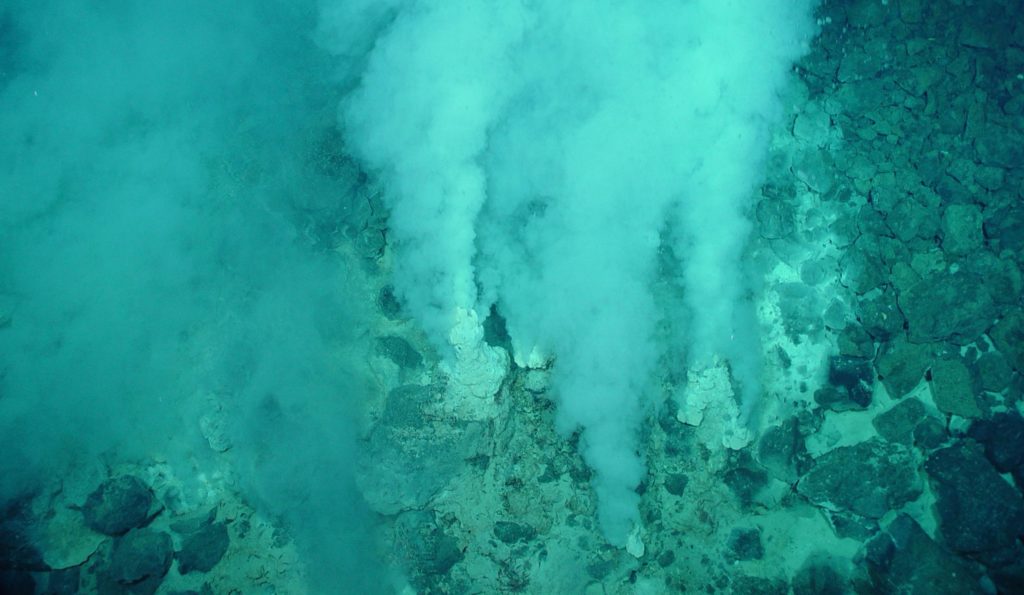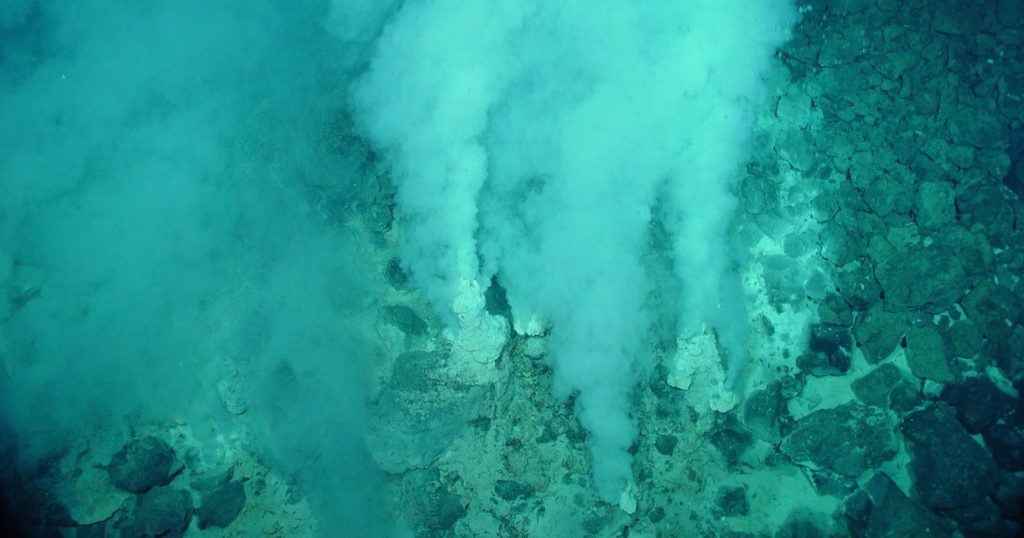 Intelligent Design
Intelligent Design
On the Origin of Life, Here Is My Response to Jeremy England


I greatly appreciated the opportunity to interact with physicist Jeremy England in the journal Inference. See my earlier article on the subject here. England is a very talented researcher, and embodies the highest ideals of the academy. He also addresses himself in other contexts to the general public. I note that he has a new book due to be published in September, Every Life Is on Fire: How Thermodynamics Explains the Origins of Living Things, which the publisher, Basic Books, offers as being “in the tradition of Viktor Frankl’s Man’s Search for Meaning.” Clearly, the questions he and I have discussed are not only of scientific or academic interest, but instead go to the root of life’s meaning and purpose.
His response to my article is both collegial and thoughtful. He acknowledges my understanding of his work and of the underlying fluctuation theorems, and he respectfully expresses his disagreement with my conclusion. In reality, the difference in our views stems less from our understanding of the science than from the different contexts in which we analyze the theory and the experimental data.
England rightly states that the fluctuation theorems allow for the possibility that some mechanism could drive matter to both lower entropy and higher energy (higher free energy), thus potentially solving the problem of the origin of life, at least in theory. In contrast, I addressed the likelihood that, given the practical constraints, realistic natural processes on the early earth could generate a minimally complex cell. In that context, England indirectly affirmed the main points of my argument and thus reinforced the conclusion that an undirected origin of life might be possible in principle, but it is completely implausible in practice.
The main points of my argument can be summarized as follows:
- Natural processes tend to drive systems toward higher entropy, lower energy, or both. In direct conflict, the origin of life requires a collection of molecules to move toward dramatically lower entropy and higher energy.
- The only way to overcome the thermodynamic barriers is for an engine to be present at the very instantiation of life that can convert some available source of energy into a form that can fuel the construction and operations of a cell.
- Significant quantities of information must also be present both to steer a highly specific set of interconnected chemical reactions that comprise a minimally viable cell and to direct the generated energy toward powering the otherwise nonspontaneous reactions.
The Need for Engines and Information
In his response, England directly affirms the first and second points:
Given the relationship between work absorption and probability expressed, the equation suggests there may be a scenario in which a low-entropy, high-energy, stable state of matter may be a likely outcome of the dynamics, and if so, then it must involve a process that absorbs and dissipates a lot of energy from the environment. This scenario would be most interesting in cases where absorbing energy from the environment is difficult, because then it might be possible to see the signature of this energy flow in the exceptional capabilities of the structure that emerges.
What England calls a process that “absorbs and dissipates a lot of energy from the environment” in such a way as to create a “low-entropy, high-energy, stable state of matter” is precisely what I called an engine. Another useful designation in some contexts would be an energy converter. And, in the earlier paragraphs he explicitly acknowledges that natural processes, without such an engine, always move matter toward high entropy, lower energy, or both.
England did not address my third point directly, but he did cite several research articles that affirm the need for preexisting information and for an engine/energy converter implicitly. In my article, I demonstrated that England’s simulations of chemical networks (here, here) must incorporate the equivalent of the molecular engines and the information-rich enzymes seen in life. England cited other studies that likewise demonstrate that energy converters and supplied information are required to drive matter to a raised free energy.
Research Studies
For instance, he referenced his study on a simulation of a spin glass driven by an applied time-varying magnetic field. A spin glass models a network of atoms with spins aligned in non-uniform directions. In the experiment, the field periodically switches between distinct time-varying patterns. The switching applies work to the network, which generates fine-tuned memory effects. Of central importance, the applied field and its pattern of switching is constructed to interact with the network in the distinct manner required to achieve the desired class of responses. As such, the field effectively functions as a finely tuned energy converter.
The role of information in the simulation is more subtle and calls for a brief digression into information theory. A key tenet is that information can often be thought of as that which enacts causal control over or reduces the uncertainty in an outcome. In the case of the experiment, the highly specified construction of the simulation entails the implementation of information. The applied information constrains the dynamics (reduces the uncertainty) to effect a specific category of outcomes. It functions equivalently to the information in an enzyme that directs the production of a specific molecule.
The same preconditions hold true for another experiment England referenced that studies the behavior of particles placed in a viscous liquid and confined within an acrylic tube that acts as a waveguide. The particles are agitated by a continuous acoustic pressure exerted by speakers. The particles’ motion and the sound transmission through the waveguide are measured respectively by a webcam and microphone. The researchers reported self-organization and “life-like” behavior in the bandgap (i.e., range of acoustic wavelengths with reduced transmission through the waveguide):
Remarkably, the lifelike behaviours often observed in non-equilibrium structures are here bestowed to the emergent bandgap itself. This is manifested in its ability to self-heal to mechanical perturbations and self-adapt to changes in the drive wavelength.
The key observations are that the speakers convert electricity into acoustic waves of specific wavelengths that interact with the particles in the required manner, so a speaker acts as a highly calibrated energy converter. And the experimental instructions specify the precise shape and dimensions for the waveguide; the size, shape, and physical properties of the particles; the positions and orientations of the speakers; and the physical properties of the viscous fluid. These specifications represent applied information that constrains the dynamics in such a way as to produce the desired results. Here again, achieving noteworthy behavior requires an energy converter and the application of information.
Relevance to the Origin of Life
A key question is to what extent the experiments England cites resemble processes on the early earth. The answer is that they are not even remotely similar. No metallic ore mirroring a spin glass would ever have encountered a time-varying magnetic field that could significantly raise the free energy of its atomic network. Nor would any collection of rocks or organic globules have ever experienced an acoustic wave that could induce self-organizational dynamics with life-like behavior. The experiments, in fact, demonstrate that any mechanism that could effectively act as an engine/energy converter requires goal-oriented engineering and careful implementation.
The constraints governing an emerging cell present even greater challenges than in the cited experiments for nature to assemble a viable engine. In life, the energy produced must be in the form of high-energy (energy-currency) molecules that could power the chemical reactions undergirding cellular operations. The challenge is that the energy requirement is enormous. As I explained in my article, the minimal power production capacity needed for a nascent cell just to prevent it from degrading into simple chemicals approaches, if scaled, that of a high-performance racing car.
The most promising candidate for a “natural engine” is proton flows across thermal vents that theoretically could generate high-energy molecules. However, simulations of vents under ideal conditions only produce chemical energy at a rate that is at least eight orders of magnitude too small. And the actual product is formaldehyde in concentrations far too miniscule to contribute to any stage in the genesis of a cell. Such meager results simply highlight the fact that no natural mechanism could realistically generate the required energy to power even the earliest stages of any origin-of-life scenario.
Moreover, the driven objects in each of the cited experiments are identical, so they all interact uniformly with the applied field. In contrast, the reactions in a cell are quite different. As a result, no single engine could drive more than one or two of them even under ideal conditions. Consequently, a cell requires multiple mechanisms to extract the energy from the energy-currency molecules and direct it toward powering each distinct reaction. I detailed in my article how only a suite of hundreds of enzymes could meet this requirement, which corresponds to at least a million bits of information. England’s response to my article has only reinforced these conclusions.
Photo: Hydrothermal vents, where some theories hypothesize that life originated, by NOAA [Public domain], via Wikimedia Commons.
